Epic heel video
Oh yes, I’ve forgotten to share a video of Epic training heel from last week. Since then, I’ve started to walk forward and I’ll show you a new video soon. Here is some puppy heel training:
Oh yes, I’ve forgotten to share a video of Epic training heel from last week. Since then, I’ve started to walk forward and I’ll show you a new video soon. Here is some puppy heel training:
Thomas has been away teaching in Norway for a week now and I’ve been home alone with my dogs. I haven’t had much teaching to do this week, just one evening class, so we’ve been training a lot. We’re fortunate enough to have two indoor dog training arenas within about an hours drive. They are warm and have turf footing, which is a life saver when it’s cold and icy outdoors. We also have a riding arena where I have my agility equipment just 5 minutes from our place, but it’s not quite the same. I’ve been training a lot of obedience the past month and both Squid and Epic are doing well. Squid will do her first obedience trial in march and I feel very well prepared for that. We’re working on a lot of sequences with 3-6 exercises in a row with only one reward at the end. I’ve also started to add more and more distractions to the sequences, trying to find new things that could distract us at a trial. I will keep doing that, but now that everything works well as a whole, I’m also planning to take care of some minor details that will make our performance even better. My goal for the trial is to be so well prepared that there will be no surprises.
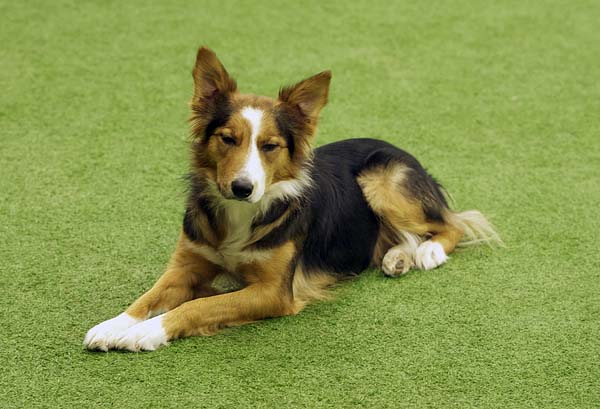
Squid, tired from four hours of training in one of the indoor arenas
Epic is mostly working on heeling, the stand (which i promise I will talk about in the blog soon), sitting still with distractions (people coming up to him is one of the hardest, he is such a happy dog, just like his sister) and always retrieving his toys to me in full speed. We’re also working on some tricks and agility foundation behaviors, like circle work, nose touches and puppy jump grids. He is so much fun to work with – always keen and focused, but also very good at relaxing in his crate when I work with one of the other dogs or watch others work. He will be 6 months old this week.
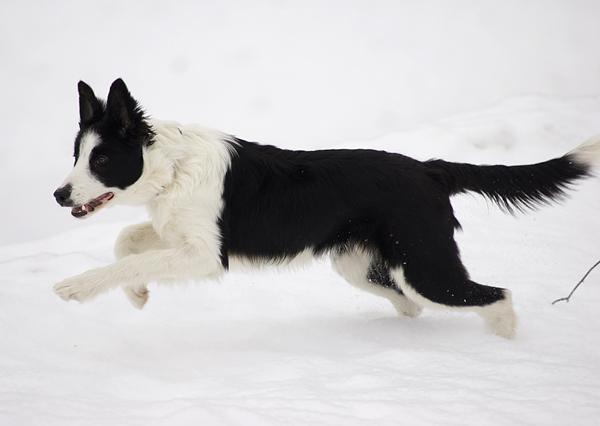
Epic, running in the snow at home
Shejpa doesn’t do obedience, but I’m working on some stimulus control and standing still waiting for a cue with her, something she’s not very good at. We’re also training agility, like today when we went to a riding arena where our dog club has training every Sunday. This year, my goal with Shejpa is to get a more consistent performance in trials. She really has ups and downs and I’ve never really figured out what makes the difference. I’m starting to think that the correct warm up is very important for her and I’m trying out different warm ups and record keep so that I can get optimum arousal and focus in every run. So far I feel I’m on the right track and I’m very excited to do more trials so that I can tell if I am or not.
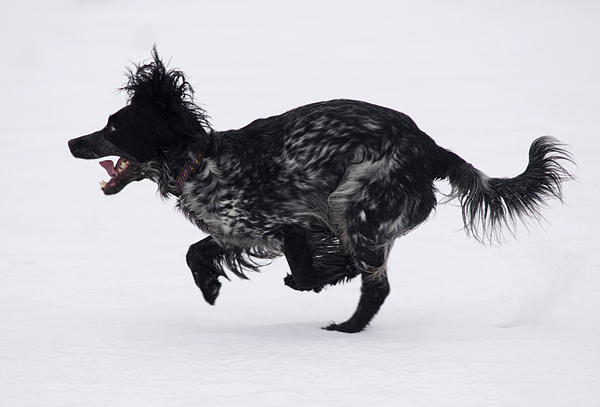
Crazy cocker spaniel <3
Right now, I’m preparing for two days of obedience with our favorite instructor Maria Hagström. I’m really looking forward to it and I’m sure I’ll have something to tell you about it later this week.
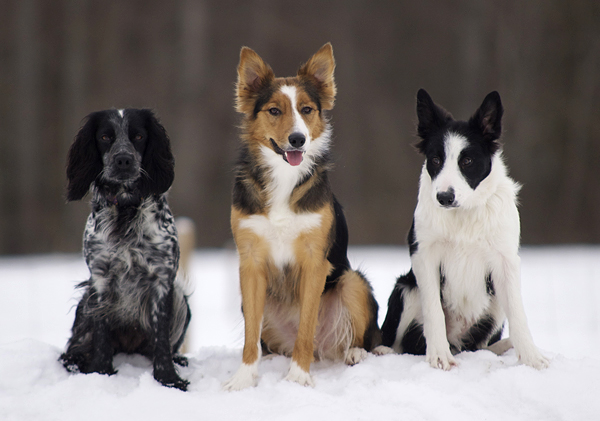
My pretty dogs
I’ve always found stimulus control very fascinating, but I always have to remind myself to work on it. Squid is by far the best dog I’ve had when it comes to discriminating verbal cues. It makes teaching her new cues much easier and much more fun. Inspired by Chaser, the dog that knows 1022 words (read an interesting article about it here), I’ve started to teach Squid to pick out toys that I have given names. So far, I’ve only worked on two different cues, but I will try to teach her about 20 and see how it goes…

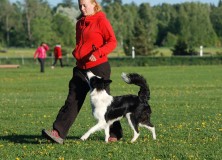
I have finally been able to make a little video to show you some of my thoughts on teaching a good heel for obedience trials. Heeling is difficult since it is a duration behavior and has many different parts that all need to be good. I split heeling into it’s parts and train one behavior at a time. This blog post is about the basics of heeling – the dog walking with me on my left side with perfect attention, attitude and position. Turns and straight sits is another part that I work on separately. Maybe I’ll write another post about that some time.
When teaching the dog to heel with me, I start by walking backwards and have the dog follow me. Doing this has many benefits, like:
When I start the training, I walk backwards away from the dog and mark and reward all attention the dog gives me. I’m not interested in the dog looking me in the eyes, as that is incompatible with a good heel position. As long as the dog is giving me attention, I will reward it. I keep the treats in my left pocket, or in my right hand (only if the dog can ignore treats in your hand). As i mark the behavior I want, I get one treat from the pocket (or right hand) with my left hand and reward at my left side. In the video, the rewards are pretty calm. This is because my dogs have great position by my left side and because they don’t need to get more active. For most dogs, I would recommend that the dog gets to chase the treat in your hand in a straight line and end up with his shoulder at your left knee. I show this with Squid at 1:05 in the video.
When the dog is giving good attention, I start to look at the dogs attitude. Some dogs need to get more active and with them I will mark and reward things like coming closer to my side, ears up, going from a walk to a trot, tail up, head up etc. I will also make sure that all rewards are active and that the dog has to chase the treat after the click. With some dogs, it’s a good idea to work on how to reward separately, so that the dog knows to come close and steal the treat from your hand on the click before you start training heel.
Other dogs have a little too much attitude. They might be jumping up and down, making noise or touching you too much. With them, you have to do the opposite. Walk a little slower and reward calm, quiet and rhythmic behavior. Stop when you reward and give a few treats for just standing still before you walk again.
When the dog shows great attention and attitude, I start shaping a good position. For a lot of dogs, this comes for free because of good placement of reward on the earlier stages. I want the dog close to my left side, straight in the body and far enough back. Watch the video to get an idea of the finished behavior.
When the dog can do a nice heel while I walk backwards for a few meters, I start to turn around. This is demonstrated by Squid in the video. It is an advantage to have worked on some rear end awareness before doing this, so that the dog is willing to swing his rear end in before walking forward. In the beginning, I will reward the dog as soon as he finds position by my left side when I walk forward.
There is of course a lot more to be said about heeling, especially when thinking of all the problems that might arise. If you have questions or comments, please post them below.
Shejpa and I went to Gothenburg for this years first agility trial. It’s an international trial at a big dog show called “My Dog”. Shejpa ran really well and came in second in jumpers on Friday. We then went on to win the standard run, which gave us our first CACIAG (international certificate). I was really pleased with the jumpers run on Saturday as well, but we only got fifth place. Four world team dogs from Sweden and Denmark was a little bit faster (0.8 seconds to first place). Here are video of our runs:
I hope you all had a wonderful Christmas and New Years Eve. We sure did. I’m so tired of snow right now, it’s pouring down outside. I plan on going by train to Gothenburg tomorrow for this year’s first agility trial, but who knows if we’ll get there in this weather. We thought last winter was extreme, with snow from December to the beginning of April. This year we got snow already in November. And December has been really cold. There are more and more indoor arenas built for dog sports in Sweden, which is wonderful. Being able to train in a heated facility with nice footing is not something we are used to here. For us, it’s a 40 minute drive to the closest one and it’s not cheap, but it’s worth it!
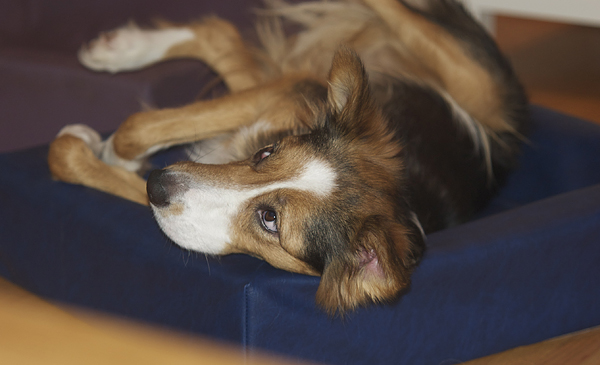
This year, I’m trying to get even more structure to my dog training. I have always found goals based on results hard to focus on, so this year I have a long list of skills that I want my dogs to master by the end of the year. Trying to figure out what you want to teach your dog in a year is not easy, but probably better than just training without knowing where you’re going. Working with these goals also require breaking them down into smaller goals and keeping track of progress often. I have decided to write down goals for one month at a time, and then combining that with a plan for each week and each day. Does it sound complicated? I guess it is, but training three dogs in at least three different sports takes time. I need to make sure that every training session is taking me closer to my goals. I believe that good planning and god evaluation is the key to good, efficient training. I’m excited to see how this works out and I’ll let you know.